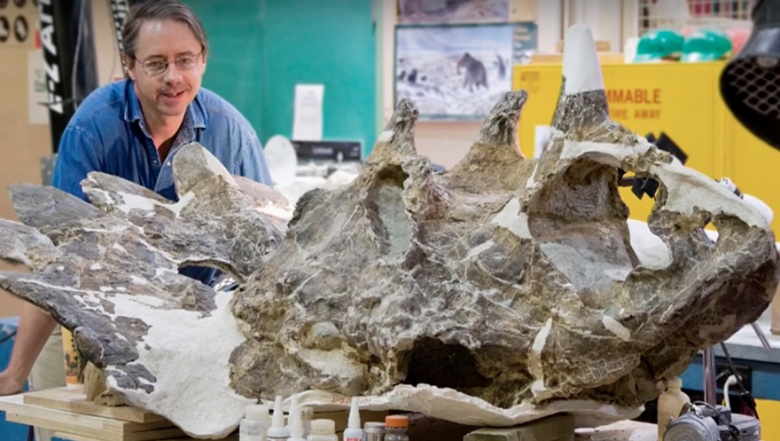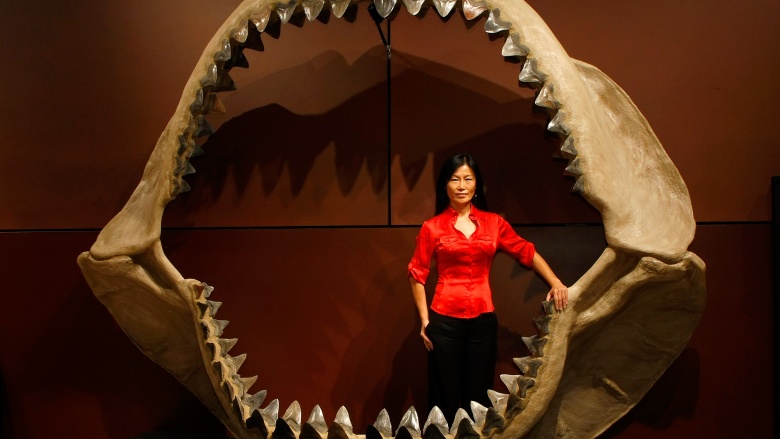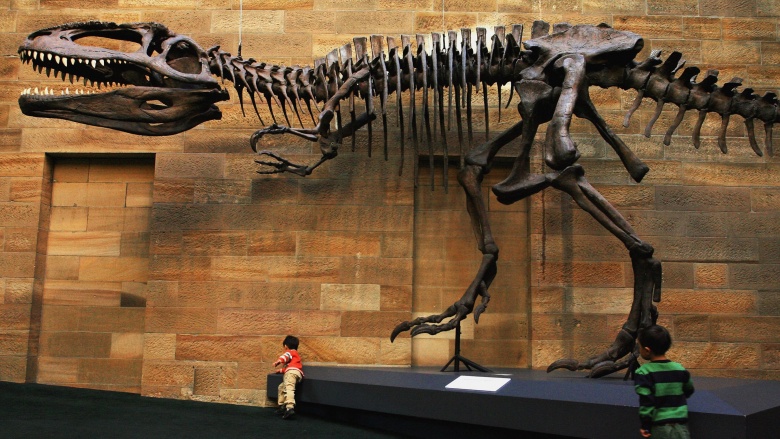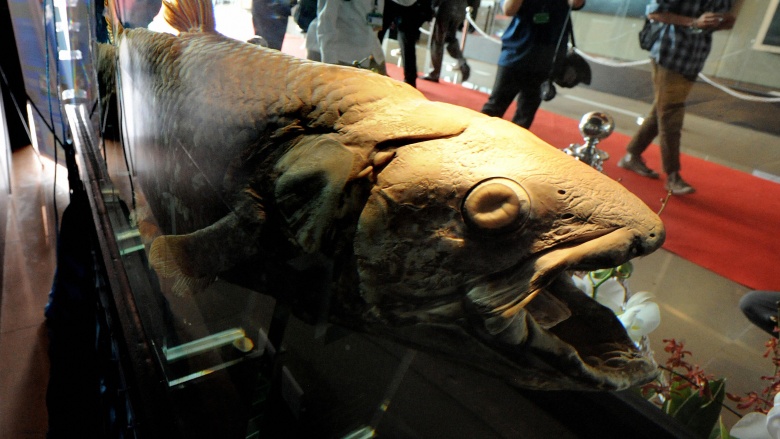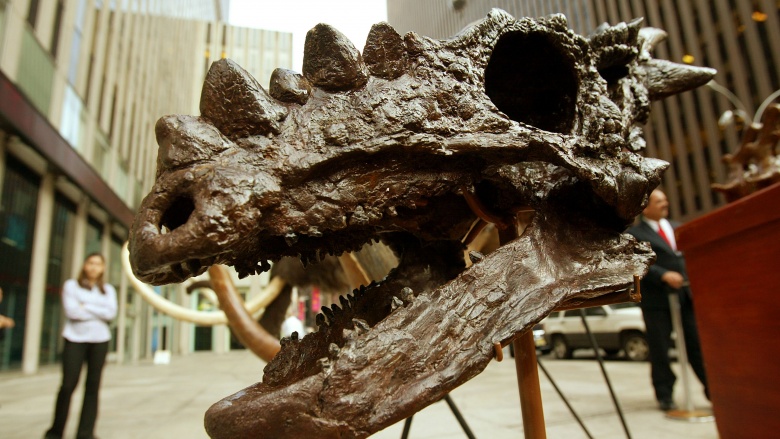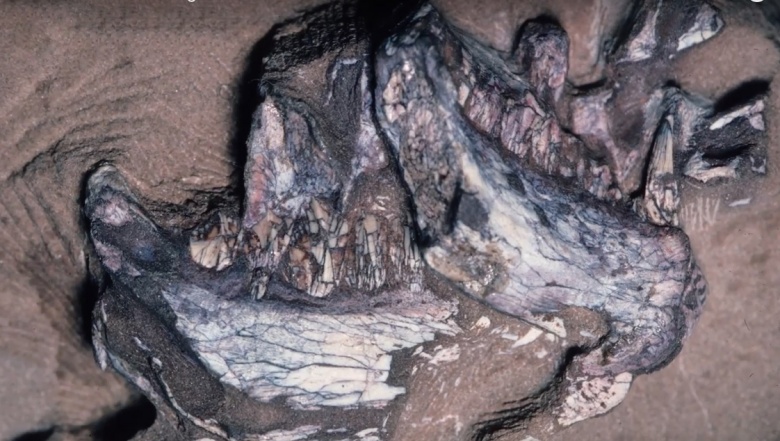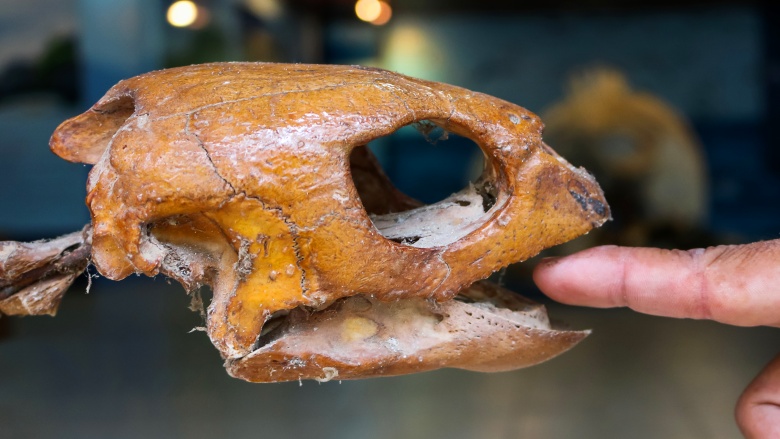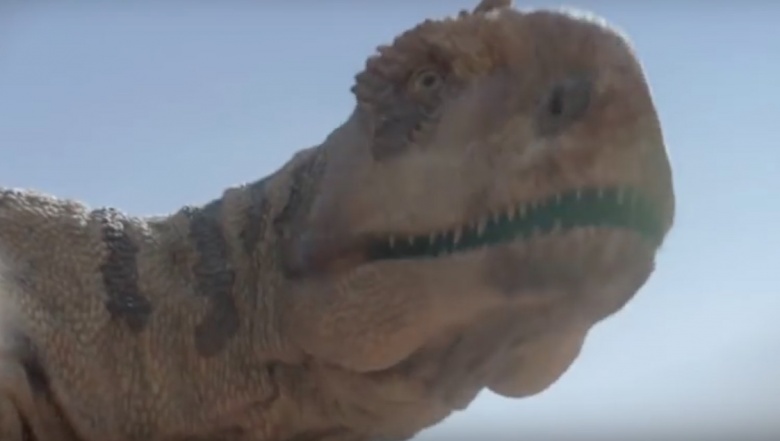The Coolest Dinosaurs You Had No Idea Existed
Sure, the Tyrannosaurus Rex and velociraptor receive a ton of press because of the Jurassic Park franchise. But they're actually pretty lame when compared to some other dinosaurs that have existed. In fact, the following are probably the coolest to have ever stalked the Earth.
Regaliceratops
The only thunder lizard on this list cool enough to get nicknamed after a comic book character, the regaliceratops caused paleontologists to rethink everything they know about horned dinosaurs. Discovered in Alberta, Canada in 2005, Dr. Caleb Brown and Donald Henderson nicknamed the regaliceratops "Hellboy" for the horns on its head, and also because of the trouble they had digging out its skull. Its horns also make it an example of "evolutionary convergence," meaning two species developed similar features independent of each other. In the case of regaliceartops, it developed the horns of a centrosaurine, meaning it had short horns over its eyes and a large horn on its snout despite being a chasmosaurine like the triceratops, which has opposing horn sizes. Doctors believe this hornhead was an herbivore like its famous triceratops cousin. Now if they could just find its Right Hand of Doom, they'd have a museum attraction.
Megalodon
Most know of the megalodon as the giant shark the Discovery Channel convinced viewers still existed. Well, they were wrong, as it died out over two million years ago, but that doesn't make the megalodon any less cool. This granddaddy of the great white shark reached an estimated 55 feet, or 17 meters, in length, and had a mouth big enough to swallow a person whole. Of course, a human or two wouldn't have been enough to sate its hunger. It's believed the megalodon also hunted whales, as its teeth and teeth marks have been found on fossilized whale bones. But don't let that lead you to think it was a completely cold-blooded creature. Megalodon raised their young in what's now an area of the eastern Pacific Ocean.
It's unknown what caused Megalodon to go extinct, but they believe climate change played a factor, which goes to show just how bad climate change really is, was, and will be.
Giganotosaurus
The giganotosaurus is the creature that dethroned the T-rex as King of the Dinosaurs, despite little being known about giganotosaurus, since a complete skeleton has yet to be found. Of the information gleaned from the few found fossils, it's only slightly larger than Rex — a giganotosaurus, or giant southern lizard, grew as large as 46 feet tall, or 13 meters, and weighed about 15 tons, or 13.8 metric tons. It fueled its massive frame with large herbivores, destroying them with 8-inch, serrated teeth. It must have also had pretty good hunting skills, as it had a pretty big brain for a dinosaur. And despite its prodigious size, the giganotosaurus is believed to have been pretty quick on its feet, with speeds topping at 30 mph, or about 50 km/h. It was definitely bad to the bone.
Coelacanth
Coelacanth is the dinosaur so badass, it defied extinction. Though it's actually a fish, coelacanth fossils date it back to 360 million years ago, in the Paleozoic Era, and it was thought to have gone extinct over 60 million years ago during the big Cretaceous-Paleogene extinction event. But this tough sea dweller didn't go down that easily — one was found much later, in 1938 off the coast of South Africa. Since then, they've been found in waters off of Madagascar, Mozambique, Kenya, Tanzania, Comoros, and in South African wetlands.
Despite still being out there in the oceans, coelacanth holds no value as a commercial fish, as it tastes terrible. However, commercial fishing seems to be threatening it with extinction a second time. Knowing humans, this time the destruction of this species will probably stick.
Stygimoloch
Stygimoloch brings new meaning to the term "headbanger," due to the thick skulls they once had. They weren't born with them, though. Born with normal (for them) craniums, their skulls thickened as they matured, until they became strong enough for them to butt heads with each other and possibly other dinosaurs. Paleontologists debate this theory though, as some believe the bone domes and the horns that surround them merely served for display purposes. From fossil records, dino scientists have concluded that stygimolochs were social creatures that traveled in herds or flocks.
Its name, by the way, isn't meant to indicate any kind of bad attitude that stygimoloch is believed to have had. The name is a reference to the river Styx in Greek mythology, which is in turn a nod to the Hell Creek Formation in Montana, where this thunder lizard's remains have been found.
Pegomastax africanus
Pegomastax africanus is probably the only dinosaur on this list, or that ever existed, which scientists believe would make a good pet. That's probably due to its diminutive size: one specimen, found in South Africa, is only 60 cm, or two feet, in length. But this little lizard was anything but cute and cuddly. This 200-million-year old creature had both a beak and fangs, and they weren't just for decoration. Upon inspecting a pegomastax's teeth, paleontologists found wear and tear consistent with sparring, so these little suckers weren't afraid of getting into a fight.
Also, in addition to fangs, pegomastax also possessed molars, meaning it actually ate plants. Also, it had a jawbone way ahead of its time that mammals wouldn't develop for millions of years. That being said, sharp fighting fangs! Maybe don't clone one for pethood after all.
Archelon
Archelon swam the seven seas in search of food about 65-75 million years ago. The largest turtle to have ever existed, it reached about 13 feet in length (4 meters,) and 16 feet wide (4.9 meters). That's about twice the size of a leatherback sea turtle, the world's largest known living turtle. To reach this size, it kept an omnivorous diet, but didn't hunt, preferring instead to eat whatever floated within reach of its beak, like carrion, squid, fish, and some plants. And the lazy bugger never dined alone. Like most larger seafaring creatures, it attracted an entourage of fish, parasites, and barnacles, all waiting for the scraps that fell their way. Oh, how the times haven't changed.
Majungasaurus
Of all the dinosaurs, the majungasaurus had the biggest appetite. Not only did this 26-foot-long monster feast on large sauropods like the 46-foot repetosaurus, but it also committed cannibalism when the need arose. Paleontologists know this from scores of majungasaurus bones found with similar teeth marks as the bones of various sauropods. However, it's unknown if majungasaurus killed its own kind or simply picked from the bodies of its fallen kin. Either way, it was the apex predator of its neighborhood, now known as the Mahajanga Province of Madagascar. So much for lemurs being the coolest part of that island.

